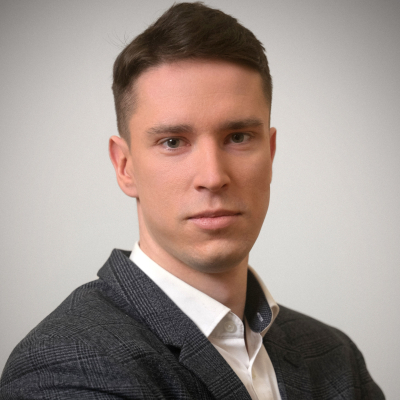Latvia has begun to develop its Smart City strategy since 2018, building an ecosystem between the industry, the government, municipalities and academia. The Smart City ecosystem is a framework that is predominantly composed of ICT and Smart energy to develop, deploy and promote sustainable development practices to address growing urbanization challenges. Smart City looks across every aspect of a city’s operations to use technology to improve outcomes and boost citizen well-being.
We strive to become the leader of Smart City solutions in the Baltic Sea region by breaking down the unnecessary bureaucracy and closing the gap between the legal framework and new technologies. It is the capital city Riga where we test Smart city solutions; however, other Latvian cities and towns are also starting to implement various Smart City solutions, for example, Sigulda, Valmiera, Jurmala, Jelgava, and many more. We trust in Smart Cities, and luckily many of us live in one.
Main subsectors
Big data, Smart energy, IoT, Smart transport, Smart infrastructure and surveillance, Smart health care
Fast facts
- According to Accenture’s latest economic modeling analysis 5G will add up to 2 billion EUR to Latvian GDP and has potential to create up to 40k jobs. But we are ready for more, as operational 5G base stations are set to work.
- Our ICT products and services are in high demand, as we offer the highest ICT exports in the Baltics.
- Also, our government understands the importance of big data, smart energy, IoT, as developing the IT sector is a strategic priority of a governmental policy. You can get a glimpse of how the city of the future looks like already, as we have specialized urban innovation zones for Smart City solution testing. And let's not forget about the utilized cross-sectoral cooperation ecosystem.
Industry statistics
- The importance of the sector in GDP keeps growing. As of now, the ICT sector has 6% of GDP. ICT turnover in 2020 was 4.3 billion EUR.
- Two heads are better than one. Research platforms include IoT, Big data transfer and processing, AI laboratory system modelling and software technologies, real-time system laboratory. Already 28% of companies in Latvia use IoT - it ranks as 13th in the EU.
- Many of our ICT products and services are innovative and patent-pending, placing us amongst the TOP 20 in patent activity globally.
Employment and education
- Many young and bright students from different countries want to study in this field in Latvia. As a result, an increasing number of study programmes are in English, and we have the highest percentage of international students in the Baltics.
- After studies, they can stay here, as the ICT sector employs 39 thousand people (2021).
- It is one of the best-paid sectors in Latvia. ICT labour costs are around 914 million EUR per year (2021).
Industry leaders
- Connecting the Baltic countries with a smart highway, the co-operative intelligent transport system (C-ITS), the Baltic corridor is underway and ready to make full use of the upcoming 5G network.
- The State Public Traffic Safety Directorate (CSDD) uses the FITS (“Future Intelligent Transport Systems”) ITEMS, which significantly improves road safety and saves lives. FITS ITEMS provide uniform management and processing of sensors and data in the transport sector, taking advantage of the latest cloud computing and AI. For more information about FITS ITEMS visit: https://traffic.wearedots.com/.
- The regulation of Jurmala city lighting uses a variety of Smart solutions. One of these is a lighting control system that allows remote control of city lights – set the turn-on/off time, digest the lighting, fix various errors, and see if something technically is wrong with a light post and react quickly to it. At present, the control system connects 1000 luminaires, but Jurmala city adds new luminaires each year when they take energy efficiency measures to change lights to LED.
- SIA Jūrmalas autobusu satiksme has created an online tool for watching bus movements and timelines. Passengers can follow the bus location online, view routes, movement lists, and schedules.
- The waste management company in Jurmala city has purchased new waste machines, and a small chip is attached to each waste container. It allows determining the owner. In turn, the garbage vehicle has a system, allowing them to weigh the waste when they drain it. In this way, citizens are encouraged to pay more attention to sorting waste and reducing municipal waste.
- The first of the smart city solutions in Sigulda municipality was a mobile app that has integrated the declared population identification card system with up-to-date possibilities for obtaining information about municipality-related topics.
- Valmiera was the first municipality in Latvia, which developed and introduced the smartphone app My Valmiera. Also, Valmiera installs Smart lighting, a new video surveillance system, and a digital information stand.
- One of the solutions introduced in Jelgava city is the monitoring of traffic intensity to determine street congestion. In the long term, it allows to effectively plan street repair works and traffic organization, making the everyday life of residents more comfortable.
- VEFRESH is an innovation movement established once the district’s technology leaders joined forces with real estate developers and Riga municipality-owned culture venue VEF Kultūras pils. It aims to redevelop the VEF district as an innovation sandbox where corporations, startups, and the public sector can prototype and test their latest public space solutions. VEFRESH works closely with the City of Riga and the Ministry of Economics of Latvia to develop the VEF district as Latvia’s first smart city innovation district.
Downloads
